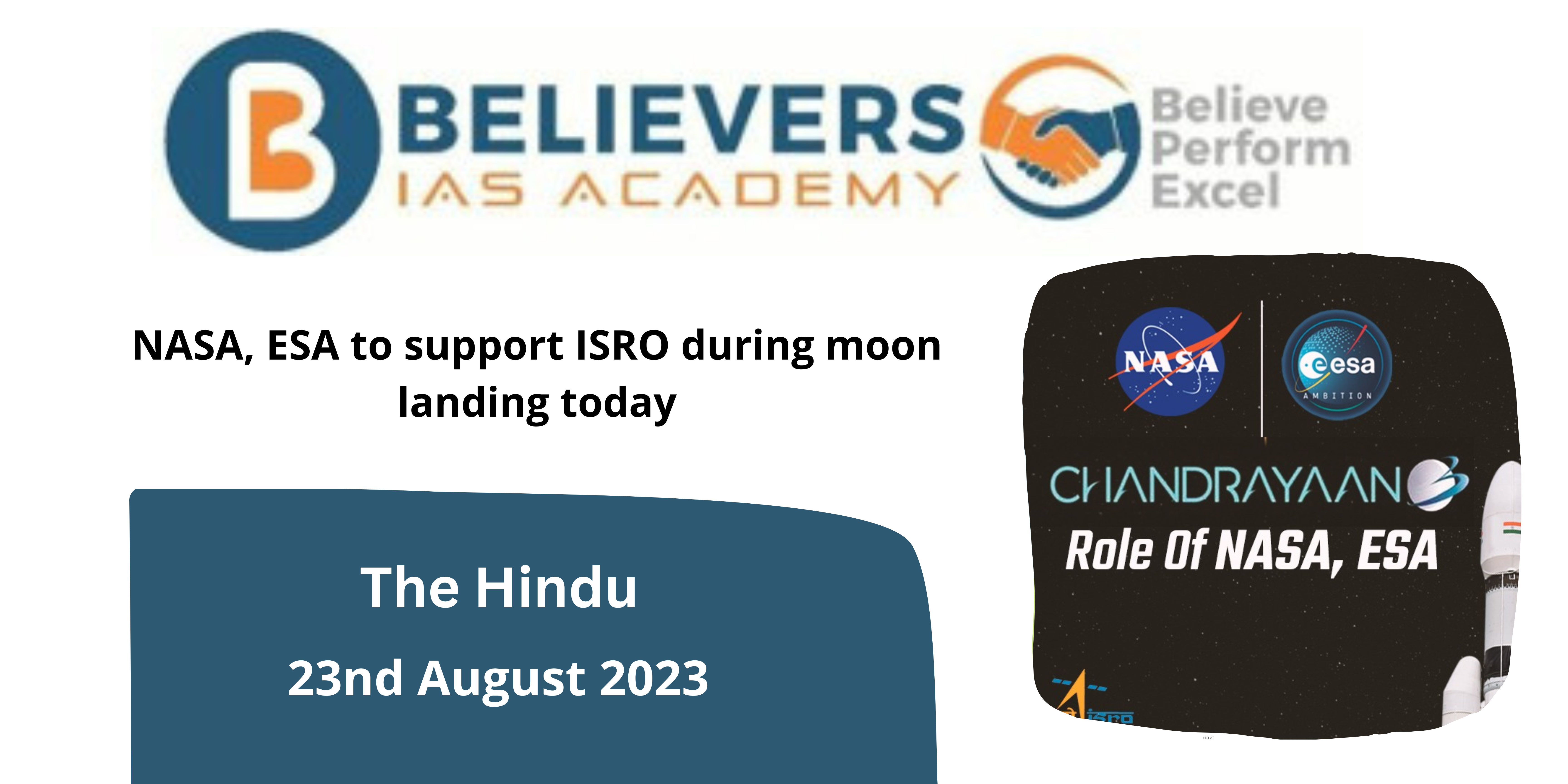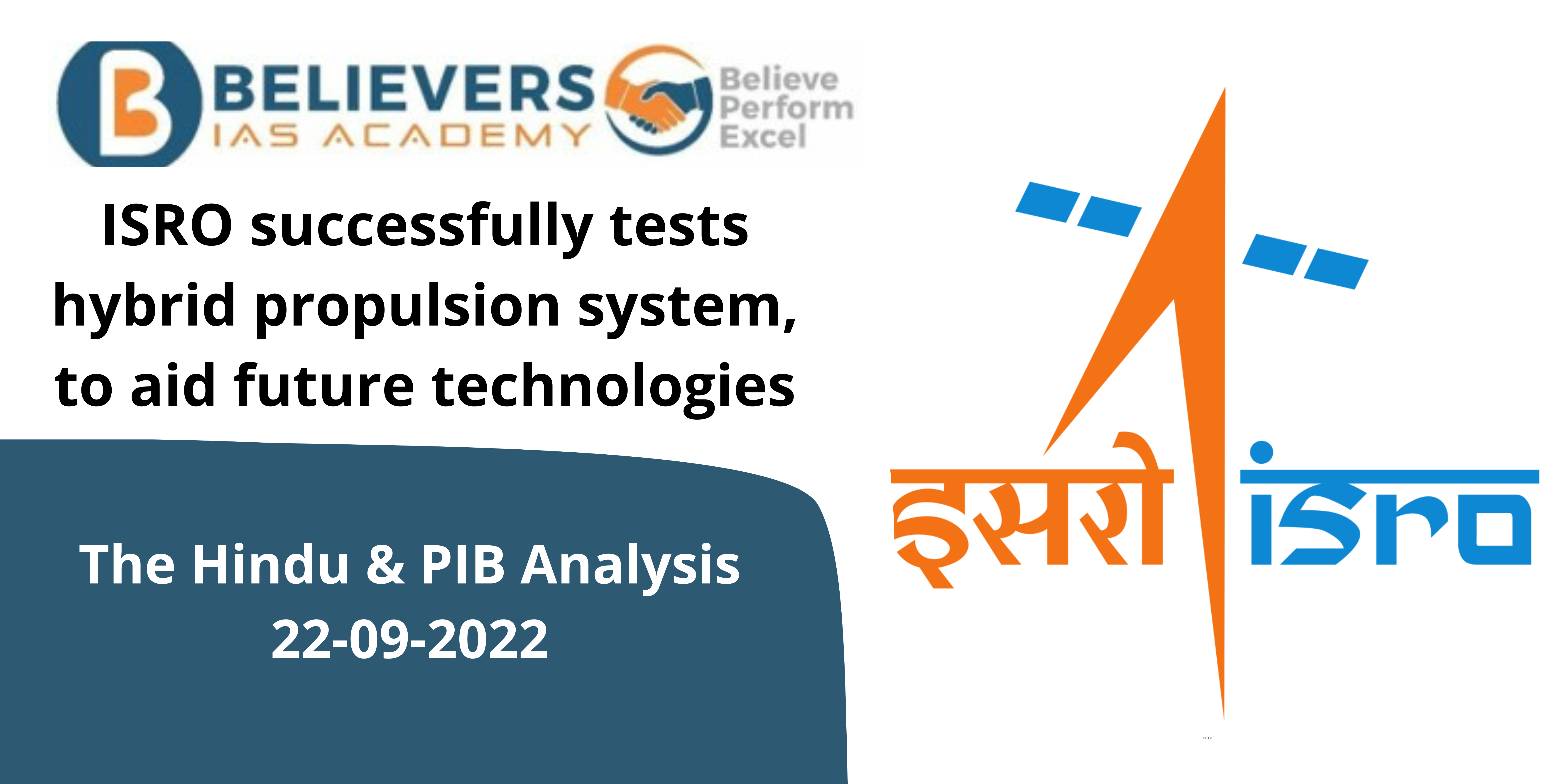NASA, ESA to support ISRO during moon landing today
Context
The National Aeronautics and Space Administration (NASA) and the European Space Agency (ESA) have been assisting the Indian Space Research Organization (ISRO) to monitor the health of the spacecraft since the Chandrayaan-3 mission’s launch on July 14.
Overview of the Chandrayaan-3 Mission:
- The Indian Space Research Organization (ISRO) is leading India’s third lunar exploration mission, known as Chandrayaan-3.
- The main goal of the project is to send a rover to the lunar surface where it will collect important information on the Moon’s composition and geological features.
International Cooperation:
- To increase the mission’s success, ISRO has partnered with other space agencies like NASA and ESA.
- Chandrayaan-3 is receiving assistance from NASA (National Aeronautics and Space Administration) and ESA (European Space Agency) through the provision of ground station resources and knowledge.
ESA’s Role:
- The ground stations operated by the European Space Agency, which are a component of the ESTRACK network, are used to support Chandrayaan-3.
- The 15-meter antenna in Kourou, French Guiana, and the 32-meter antenna in Goonhilly Earth Station, United Kingdom, are the two specific ground stations involved.
- These ground stations are in charge of monitoring the satellite’s orbit, collecting telemetry data (information about the condition and state of the spacecraft), and transmitting this data to Bengaluru, India’s ISRO Mission Operations Centre.
- They aid the spacecraft’s operation by sending commands to it from Bengaluru.
Nasa’s Role:
- The Deep Space Network (DSN), a global network of ground stations intended to communicate with and track interplanetary spacecraft, is one of NASA’s primary missions.
- The NASA Deep Space Network (DSN) is providing telemetry (data transfer) and tracking coverage for Chandrayaan-3 during its powered descent phase (the procedure for landing on the Moon).
- With this help, it is possible to keep a careful eye on the spacecraft as it makes its way toward a secure lunar landing.
Collaboration is Important for Lunar Landing:
- The assistance from NASA and the ESA is especially important when Chandrayaan-3’s lander is in its powered descent phase.
- Having numerous ground stations from various agencies ensures redundant and accurate tracking, increasing the likelihood of a safe landing during this phase, which calls for intricate manoeuvres and precision control.
Global Characteristics of Scientific Efforts:
- The international aspect of space exploration and scientific cooperation is best demonstrated by the ISRO, NASA, and ESA partnership.
- International space agencies collaborate to share resources, experience, and knowledge for the advantage of both parties.
- Such cooperation quickens the process, lowers expenses, and improves the prospect of mission success.
Conclusion :
In conclusion, the coordinated efforts of ISRO, NASA, and ESA to support Chandrayaan-3 demonstrate the value of global cooperation in space exploration. Utilizing ground stations, such as those from the ESA’s ESTRACK network and NASA’s Deep Space Network, helps to monitor the mission and ensure its success, especially during the hard lunar landing phase.




